In a major escalation, Ukraine on June 1 attacked five air bases deep in Russia where bombers and other strategic aircraft are deployed using FPV suicide drones.
A source in the Ukrainian Security Service (SBU) told CNN that the attack targeted the air bases of Olenya, Belaya, Ivanovo and Dyagilevo. The Russian Ministry of Defense later revealed that Ukrainka air base was also among the targets of the “terrorist attack,” which Ukrainian media referred to as Operation Web, or Spider Web.
Belaya in the Irkutsk region is located some 4,500 kilometers from Ukraine’s border with Russia, and Dyagilevo base in the region of Ryazan, which is located in western Russia about 520 kilometers from Ukraine, is a training center for Russia’s strategic bomber force.
Meanwhile, Olenya in the region of Murmansk in the Arctic Circle, is located more than 2,000 kilometers from Ukraine. Ivanovo in the region of the same name, mainly a base for military transport aircraft, is more than 800 kilometers from Ukraine.
The most remote of the bases, Ukrainka, is located in the Amur region, well over 6,000 kilometers away from Ukraine’s border.
According to Ukrainian media, the operation, which took one and a half years to prepare, was overseen by President Volodymyr Zelenskyy and personally directed by SBU head Vasyl Malyuk.
The SBU source who spoke to CNN said that the operation was “extremely complicated from a logistical point of view,” with the drones carried inside wooden mobile homes that had been carried into Russia on board trucks.
“The drones were hidden under the roofs of the houses, which were already placed on trucks. At the right moment, the roofs were remotely opened, and the drones flew to hit Russian bombers.”
Ukrainian media published photos from the preparations for the operation, showing a model of the FPV suicide drones used in the attack as well as the mobile houses used as camouflaged launchers.
Notably, the drone model in the photos was armed with not one, but two warheads. Meanwhile, the ones seen actually loaded in the mobile homes were not armed in the same way and it didn’t appear that there is enough space for such a payload in the launch compartment hidden within the roof of the mobile houses.
At least eight mobile houses appeared in the photos, each can apparently hold upwards of 40 FPV suicide drones in eight rows.
Russian media was quick to identify and geolocate the warehouse where the attack was staged in the Chelyabinsk region, close to the border of Kazakhstan.
The SBU source told CNN that more than 40 aircraft were hit during the attack, including Tu-95 and Tu-22M3 strategic bombers and an A-50 airborne early warning and control plane.
Videos leaked by the SBU confirmed that both Olenya and Belaya were hit, with four Tu-195s and one An-12 cargo plane lost at the first air base and an additional Tu-195 and two Tu-22M3 getting struck in the second.
Near Belaya, civilians who noticed the drones being launched from the mobile houses intervened and reinstalled the roof plates, limiting the damage. Later, the houses were seen on fire.
Meanwhile, close to Oleyna, the man who was driving the truck carrying the mobile houses was reportedly arrested. Video footage also showed the body of another driver who was apparently strangled to death, although it is unclear where exactly the footage was taken.
The Russian MoD admitted in a statement that some aircraft caught fire in Oleyna and Belaya, but said that the attacks on the other three air bases were repelled.
“There were no casualties among military and civilian personnel,” the ministry added, noting that “some participants of the terrorist attacks were detained.”
There was no visual evidence confirming that Ivanovo and Dyagilevo were hit. According to Russian media, all the drones launched at the two air bases were intercepted, the launchers were found and the drivers were arrested.
Meanwhile, videos from Amur confirmed that the launcher that was meant to attack Ukrainka broke down on a road far from the air base. It is unclear if the driver was caught, but footage from the scene showed one of the two mobile houses loaded in the truck exploding. One civilian who was inspecting the house from the inside and others who were standing nearby were most likely hurt.
Ukrainian media alleged that the drones used in the attack were equipped with artificial intelligence models to detect and hit their targets on their own. The models were supposedly trained using examples of the Tu-195 and Tu-22M on display at the Poltava Museum of Long-Range and Strategic Aviation in Ukraine.
Still, the claim does not hold up as the footage released by the SBU confirms that the drones were in fact equipped with some sort of a datalink. Furthermore, Russian media identified the software interface from the drone footage as ARDUPILOT, which is usually used not just to receive videos, but also to control drones directly.
No antennas or control systems were found at the scene of the attacks, according to preliminary information. This led to speculation by Russian media that either Ukraine used satellite data links with help from one of its allies, or simply equipped the drones with SIM cards from Russian mobile carriers and used the network as a data link.
It’s worth noting that the operation came just hours after an attack that collapsed two bridges and caused train derailments in the Bryansk and Kursk regions. Seven people were killed and more than 70 others were wounded. Women and children were among the victims. The attack was very likely staged by the SBU to distract the upper echelons of Russian security apparatus and political leadership before the main operation.
The operation was an unprecedented escalation by Ukraine for many reasons. First it was clearly meant to degrade the nuclear deterrence capabilities of Russia. Second, it came just a day before the two countries are set to engage in another round of direct talks in Turkey.
It is highly unlikely that Ukraine just wanted to improve its stance before the talks. This escalation appears to be meant to blow up the talks all together. While this is not in the interests of Ukraine itself, as it is losing territory every single day, the allies of Kiev, namely the United Kingdom, Germany and France have been pushing in this direction.
The operation was clearly too complex on the technological and logistical levels for the SBU to pull it off on its own. In fact, it is believed that the intelligence service almost never operates alone. The German and French intelligence offered much support for Ukraine, but the British intelligence, namely the MI6, has been the main player helping the SBU when it comes to attacks on Russian territories.
Right after the operation, the Axios news website reported that Kiev had informed the administration of United States President Donlad Trump of the planned attack. Later however, the website issued a correction, saying that Washington knew nothing about the operation.
This contradiction indicates that some side, possibly Ukraine and the UK, wanted to frame Trump, which has been pushing for a reasonable settlement with Russia, as a partner in the operation, likely hoping to provoke a serious reaction from Russia.
While Moscow is guaranteed to respond to the attack, it will not likely abandon the talks in Turkey, just to prove to the U.S. who is blocking a settlement.
_______________________________________________________________________________________________________________________
SouthFront: Analysis and Intelligence
NOW hosted at southfront.press
Previously, SouthFront: Analysis and Intelligence was at southfront.org.
The .org domain name had been blocked by the US (NATO) (https://southfront.press/southfront-org-blocked-by-u-s-controlled-global-internet-supervisor/) globally, outlawed and without any explanation
Back before that, from 2013 to 2015, SouthFront: Analysis and Intelligence was at southfront.com



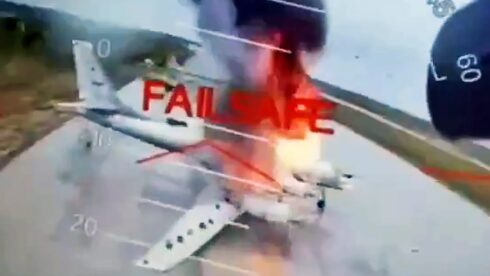
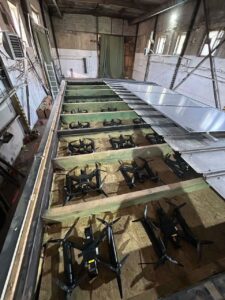
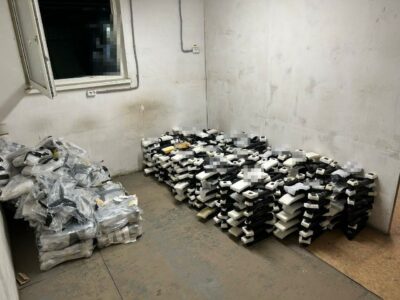
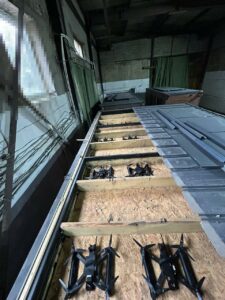
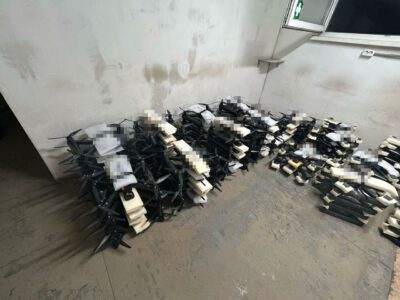
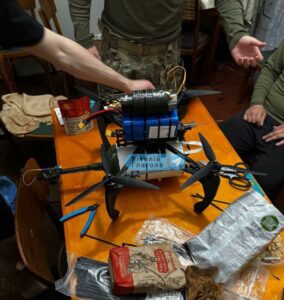
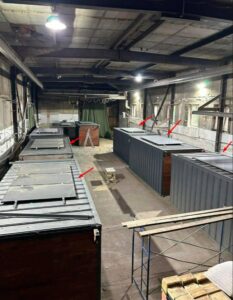
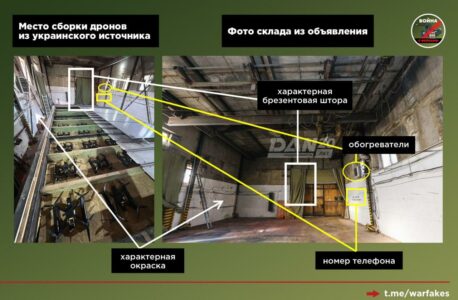
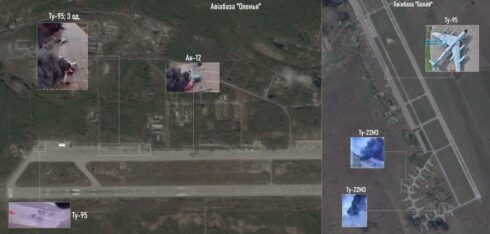



another nato failure–no casualties—americunt desperation
fuck me, russia was fucked hard in the ass, boom boom kalibrated
the russians’ only sarmat missile (nato code: satan-ii) has 16 warheads and is capable of wiping out all of france. the russians have over 6,000 warheads, of which at least 4,400 are in “active” status. and now you want to talk about who’s going to fuck who?
it do no good, if its not fired. the question is, if it does anything at all, even if its fired. you know, einstein was both a german, and a “jew”. why do you trust that combination ?
putin is too passive he will never do anything that will harm his cherished western partners.
i’m sure we will take your mi6 comments into consideration … and to the exact opposite.
name one thing that putin involved russia in that has turned out well for russia.
since you are all about your worship of the west, that would be an exercise in futility because you would nick pick and deny everything i would say. europe is at 0% growth with a mountain of debt while the us has compeltely lost control over its debt. time is not on their side.
russia is managed the same way by the same tribe and suffer all the same problems: outsourcing, low birth rates, mass migration, high jacked economies and currencies, etc.
having 4% growth, no debt and too much economic activity is not _quite_ the same as having no growth for 3 years and/or a mountain of debt menacing to crush you. false equivalence fallacy.
putin fue elegido por el borracho yeltzin para tapar su corrupción y esconder la destrucción del submarino kursk
he prevent the colorrevolutions in belarus and kasakhstan
no putin is a master in strategy a very meticulous and clever one : is goal is now to have full right to extend russian presence to most of ukraine, for obvious security reasons. and the later just give pretext of such a development .
active lol your phuccin funny eh.
the whole of frog land isn’t worth one sarmat. little manny macron is already being beaten up by his husband anyway, so why would putin bother.
thats just the opening show , enjoy eh
await the returns, a direct attack on putin, a direct attack on russian nuclear facilities. they have the right to use nuclear weapons for these two reasons! let hope a large number of orishnik missiles playing with english german and french rectums give starmer macrom etc the enjoyment they seek!.
but i cannot see russia letting this go! nor can i see american getting another get out free from jail card! the time has long passed that america should have realised just how sick and degenerate and corrupt it is, the better for all concerned! including americans!
this kremlin crowd will ‘let it go’, as you say, just like they let the crocus hall atrocity float away, out of sight and out of mind.
nafomosexuals and ukretards
screeching as the failed ukrainian cia project circles the bowl.
fuck me crimean bridge is under attack, putin cucked again!!!!!
you some kind of schizophrenic relative of clyde ? there is prescribed medication which you can access through a dr’s script, you know.
russia should respond..how?..very easy 7 planes lost..then 7 bridge over dniper included in kiev must be destroyed…
if irans new leader is still ready to fight and not a traitor deliver him and kim jon un everything they want and deliver everything to the huthis as well.
hate to be always a wet blanket prick, but that’s seven bridges too far for poots & coy.
no casualties? wake up to the realty dumbo.40 bomber destroy
ukraine says 40 russian media 4 i guess the truth will be somewhere in between. both russia and ukraine are constantly lying this entire war.
no. ukraine lies a lot, hides and exagerate. you have here on southfront complete articles about the attack that would be not possible in ukraine. that is again a false equivalence. one side is much more trustworthy than the other.
russia lies too. surely you are not that ignorant.
ukraine lies a lot, you say ? must be a pack of inbred mongrel joos running around the place then.
needing to push the same silly story on repeat to make people believe it screams exaggeration.
there is no proof of “40 planes destroyed”. and of those hit, there is no proof that these are actual losses and cannot be repaired. and any and all ukrainian propaganda has been repeatedly misleading if not outright lying, so any statement from them is dubious by default.
and let’s be honest — if you’re actually ahead, you wouldn’t be going after civilians.
yup kiev is trying to milk this operation to the max with what is clearly a bogus number. both msm and sadly alt media have taken the bait for headline clickbait. actual number is more like 7 destroyed, 3 damaged. significant hit, but rf has: 47 tu-95m2, 56 tu-22m, 16 tu-160,and other bomber types for a total of ~140 long range bombers. t.me/nabrezhnyeintel/3483. since pakda not here yet and pricier, rf might do well to either refurb tu22’s from boneyards or restart limited production.
don’t question your figures at all, but i thought those awacs were at a premium. one was lost over the black sea some time back from what i remember.
the constant repetition of the same ludicrous talking points by propagandists is the biggest giveaway — they’re trying way too hard to make it sound factual.
if it is cnn, of course, it is full of shit.
by the way, if you’re truly on top, there’s no reason to harm civilians. just a thought.
terrorizing civilians is sas’s stock-in-trade; they’re not any good at anything else.
hahahahaha hahahahaha hahahahaha hahahahaha hahahahaha hahahahaha hahahahaha hahahahaha hahahahaha hahahahaha hahahahaha hahahahaha hahahahaha
how do you manage to laugh when your mouth is always full of nato cock?
he has been equiped with two mouths for more efficiency.
the schoolyard bully’s cock, not anything to do with nato.
imagine ukraine and nato being 10% as honest as this article. won’t happen of course because they know they are full of shit and their narrative is flimsy and weak.
‘nato was not notified’ 😂
im still waiting for the angry all caps rage from zion don about how it must stop… mr zelinsky…
use the oreshnik already.
you can not negotiate with terrorists.
agree, you can not negotiate with nazis. that are only a temporary definition, what do you call mass murder in the hospitals ?! destroy “us” and kill the “european” regimes !
why was lindsey graham in kiev, a couple of days ago? did he come with instructions? reminds of when john brennan turned up in ukraine, with a list of instructions, a few days before the 2 may 2014. what happened next?
when you need to rely on lindsey graham … all is lost.
lindsey graham is the official guy for the cameras cia or military specialists were probably there alongside him.
big gay bar opening in kyiv. miss lindsey guest of honour. no mulattos there though. nazis don’t like ’em.
if it would have worked and all planes would have been destroyed donni would have probably ordered to hunt down the russian subs and launch the nukes so he can win the ultimate war. now he will pretend he had nothing to do with it and its still bidens war.
this will have no impact on the outcome of the war but really amazing 🤔
this was inside job.
no impact on the war against ukraine but depending on how much was hit an impact on the deterent and that will mean more arguments for european and us warmongers to shut up the “if we do to much russia will nuke us” crowd by telling them even ukrainian drones can knock out russian nuke delivery systems then for the usa it would be a walk in the park (its enough if they believe it).
russian response needs to be strong and putin needs to put fear into the sbu/mi6/cia nexus.
putin can’t do that, his big blond boyfriend wouldn’t approve.
you do understand that starmer and macron are known to have blond boyfriends?
they all seem to belong to the same clubs
it is irrelevant who has buzik boyfriends, what matter is: who is rounded with dozens of chabad lubavitch khazarian “advisers” agents
whos is not? perhaps kim jon un and lukashenko the two who refused to vaccinate his their citizens.
that’s right. they’re all poots’ western friends.
nato trump say they weren’t informed. bullchit.
just by chance i wrote a post about tu-95s, tu-22s and tu-160s speciphically in three languages one day before this operation , they were perfect posts no vulgarity or anything and they were all erased.
ah, a “coincidence” in time !
justrying to keep you on your toes
probably just a “coincidence.” there are so many “coincidences” now. like (((graham and blumenthal))) being “coincidentally” in kiev when this happened.
the us is the main cause of the war yet russia is keen to prove to the us it is a good partner, what a pack sycophantic nonsense.
hopefully all the oligarch get to keep raping russian natural resources so they can give them away to the enemies that are murdering russians, got to keep the priorities straight
it is time to go get your nato paycheck, generalissimo vanya. the mi6 is proud of your service.
mi6 doesn’t issue paychecks; they use paycheques instead….. ;-)
as long as russia do not see that they can be exposed to a planned defeat, this is the risk. put the country on war feet ! activate alliances ! the “us” are the source to nazi germany, and have genocide 200 peoples.
putin’s attitude (and that of the russian oligarchy) can only be understood in the following cases:
1. he is tremendously stupid and cowardly.
2. due to his admiration for the west, he has largely dismantled the former ussr’s nuclear power over the past 30 years and now has only a handful of warheads and launchers, compared to nato.
3. he is as oligarchic and liberal as the west, which he admires, hiding stolen money in the west and dreaming of stagnation and an impossible peace…..
….
4. his cowardly incompetence is also evident in his policy of abandoning his main partners in the middle east, iran, syria, and hezbollah, leaving them at the mercy of the united states, israel, and turkey.
exactly the same is true of armenia in relation to azerbaijan and türkiye.
6.- he cowardly murdered prigotzine, betraying the word given to the great leader of belarus and best ally, mr. lukasenko.
b2’s look vulnerable.
very disappointing!
bombers sitting there collecting dust and now destroyed, when they could’ve leveled the ukraine 3.5 years ago!
ah well… that’s another way to lose a war i suppose… an inexplicable reluctance to use one’s phenomenal firepower!
unless putin hands over the military reigns to someone like medvedev, russia might as well raise a white flag!
as great a statesman as putin is, he’s a total military failure unfortunately!
i think that the psychopaths not really know how they shall explain the non-existance of “nuclear weapon” 🤡 and its to late to ask the clown einstein. the world cattle regime are about to burst !
they don’t need bombers to level kiev they have plenty of missiles that can do it.
strategic bombers are used for carpet-bombing large areas (ie: industrial areas) using cheap “dumb” bombs like the fab.
ballistic missiles on the other hand, are expensive and used for one-off precision strikes like a military academy, etc.
strategic bombers are almost a relic of the past. with the proliferation of air defense systems, like in ukraine, and cheap missiles, i think russia would be better off with building long range heavy drones for firing standoff precision weapons. this attack may be a blessing in disguise as it may force russia to evolve.
it would be amazing if russia could build anything like that after they destroyed their domestic aircraft industry over the past 20 years.
where do you think su-34 and su-57 come from ? santa ? everything disppears but knowledge stays. that is the whole point of dna.
they can’t even manage to make enough of them to even account for wear and tear. putin is killing the russian military because he won’t admit that a war is going on. he wants to pretend its all a little misunderstanding that will go away if it is ignored.
look at how much trouble russia is having making a domestic plane. the ms 21 project is a slow motion because they insisted on using so many imported parts and the bikal light airplane probably will never be built because it depends on american motors and european electronics, probably be easier to buy chinese transport drones or making an-2 again, russian aviation = huge mess
china is not selling drones to russia cause of the arms sanctions. they are selling parts but they are selling parts to ukraine via other countries as well.
you demonstrate a lot of ignorance yet want to participate… just stop!
sukhoi s-70 okhotnik-b
what a joke, that is just some display model. the russians don’t even have proper awacs and wouldn’t know what to do with it if they did, they don’t have proper military communications and can’t even call in an air strike or artillery support. everything has to be planned days in advance by “high command”
ignorance is bliss… beriev a-50
they had some natokraine was very proud a couple mounths ago to kill two of them.
your problem lies in believing ukraine propaganda.
the a 50 that were shot down were in pro russian channels as well. one i think over the black sea and one in the north using anti air systems they sectretly pushed very close to the front line. they lost some of those later in the retaliation.
thanks to salt treaties russia needs those planes to launch cruise missiles and kinzal, russia needs to have ground based launchers but those are forbidden to them in the silly nonsense treaties they insist on signing on to.
except mig31 launch kinzhals, and the treaties you talk about have been denounced by the us. the new variant of the iskander reach 1000km. i don’t think developping a platform to shoot standoff weapons would take long and is probably already in the work follwing the denoucing of said treaties.
lol plenty of dumb in terrorist russia eh.
russia can’t effectively launch cruise missiles and kinzals without those bombers.
the mig31 launch kinzhals. the new variant of the iskander reach 1000km. i don’t think developping a platform or adapting an existing one to shoot standoff weapons would take long and is probably already in the work. silly propagandist.
just stop making a dork of yourself!
kinzals fired at the ukraine were via mig-31k jets.
what were the tu that wer shown firing then?
problem is all real targets of the “ukrainian” army are outside of ukraine.
russia is a fukkin shittthole with a falldown military get over it losers.
hand it over to medvedev and you can raise the white flag he has been pro western before and is just pretending now to not get thrown under the bus. it was him that refused to veto the us no fly zone over lybia that turned into a “we bomb everything that moves on the ground” zone.
the ussr built approximately 500 each of tu-95s and tu-22s – most of which are still mothballed and available for use in short order. so just a pr stunt.
your fukkin hilarious and stupid.
when you just can’t make statements longer than one line, you should refrain from calling people stupid.
he’s probably one of those overconfident imbeciles from the war zone dat com who think they can take on russia, china, iran & north korea all at once. their overconfidence as a result of killing & starving millions of innocent women, children, babies in gaza, syria, iraq, afghanistan, yemen & other banana republics in the middle east.
their overconfidence is the result of knowing they are the only ones who will do whatever it takes without any ounce of remorse. there is a reason no one ever sunk a us ship since decades. usa would end their people and the world media would spin it into a heroic deed.
yet they ran away from yemen because the houtis almost shot down a f35. the world is changing and you would need to be willfully blind not to see it.
donni has iran and china in his targets and no time for other stuff.
putin should never call this terorism.as he knows that russia and ukraine are at war.he should always expect the worst from the enemy.trump saying of he wasnt inform is a lie nd distancing from reality
if not stop know this type of attack will continue.
if ukraine knew that russian security service has deployed check points in the roads close to strategic airbases, giant net covering planes like in donbass roads againts fpv drones, and hundred of soldiers with shotguns inside that bases…then no attack would have been possible. again the incompetence of the russian military staff is obvious
if ukraine thought russia would end them if they go to far they would have never started to shell donbas and burned the people in odessa.
zelensky oversaw the operation lol! no nato oversaw it because all these attacks are nato.
soviet union would never tolerate such thing… russia are weak, because is capitalist… you can´t even test a nuke, because you “are the nice guys”…guess what? soviets fought in the ruins of stalingrad for this!? they would be ashamed of the cowardice of the kremlin! kill every bandera military leader/sbu/oligarch/politicians right now, and then russia will start things! “smo” is a joke!
thats because putin is a business manager and not a military leader able to turn kiev into dust
why would the russian oligarchs kill their ukrainian oligarch brothers they are just having a competition in throwing peasents to death for who gets to exploit which part of todays ukraine in the future.
the first blatant example of that was when lord poots and his kremlin highly likely advocated this mariupol azov swap for that ukie jewboy buddy medvedchuk.
all those orthodox russians that suffered and died when those psychos were there, while the donbass militias had control of mariupol some years before. this whole military campaign reeks of deceit and backroom “deals”. kgb shit.
totally true and correct
18 months training and planning, to cause a little damage to 9 planes, that were first launched back in the 50s. what was interesting, the media stated that ukraine notified trump. however, he phoned president putin, denying all knowledge. story retracted, as i guess somebody pointed out that they legalised russia using their nukes on the us, if the story was true.
trump will never acknowledge beein involved in something that did not work as intended.
have you noticed how quiet he has been since president putin spoke to him? would have loved to be a fly on the wall, as i assume president putin was not in the mood to cater to trump’s ego. surely trump knew that miss lindsey was going to kiev, shortly after trump was threatening russia, if they did not go with the ceasefire?
he later admitted to dodging military conscription, calling the compliant fools and idiots. you’re right. vietnam didn’t work out.
vast escalation coming—ukie burgerland nazis took the bait—expect former ukiestan to be obliterated–feminized amereikans tantrum
heard this so many times call me if the heads of ze and his oligarch friends and banderist allies are on pikes infront of the rada which flies russian colors.
little poohtin is humiliated again!!!
what idiotic genocide enjoyer westernoids think has little weight. they are still losing the war.
a blood thirsty jew will gloat over the death of any of the goyim.
the overall effect of these attacks on the war is minimal. a few aircraft out of a fleet of 2,000 have been lost. a number of civilians were killed in terrorist type operations against the rail network. western spook agencies will have played a major part in these operations. to that extent, this is an act of war from those countries. there should be an immediate appropriate response – at a minimum, fully supporting houthi operations and arming iran and n. korea.
and extending the russian nuclear umbrella to those countries. putin’s strategy in 2022 was quite valid – producing a shock effect on the kiev regime to extract certain concessions, principally no nato, with a short end to the war. it should be remembered that very nearly worked till johnson sabotaged the deal. when it turned into a multi year long full scale war, all restraint should have been thrown aside. the dnieper bridges and rail network and infrastructure should have been destroyed.
if i were a russian serviceman, i would find it difficult to understand why oil and gas were still being sold to western countries and why there were still diplomatic relations with them. all restraint on russia’s part is merely taken as weakness and incompetence and encouragement to further escalation. attacks of a terrorist nature like the night club killings and the dugina murder should have generated an exemplary response. nato spy planes should havebeen shot down.
admiral fisher of the uk royal navy in ww1 said that moderation in war is an imbecility. he was right. if the great patriotic war was conducted in this way, russia would still be fighting it – or it would have lost.
this could be seen as an act of desperation on the part of the ukies and their western handlers – the ukie army is visibly disintegrating. but russia needs to be more ruthless and assertive in its retaliation. otherwise maybe putin will be assassinated, maybe there will be mass civilian casualties in a dirty bomb. there are already proposals to supply the ukies with nuclear weapons.
there is an image component to this (global) war that cannot be ignored, even if the west is all in on this component and it’s idiotic. if russia overreacts, it will be ground for denunciation by the west and may lead to something less desirable than the current situation.
the propagandists here try very hard to piss off the other side so that it may force the hand of the russian leadership to overreact : they do this for a very clear reason, and the reason is that if russia keeps its steady pace, they will lose, and not only the ukrainian proxy war.
its to sell the idea that russia cant do anything to the west so there is no reason to restrain themselves. you will see more deliverys to ukraine soon and new plans to send in nato troop into western ukraine, moldova, georgia, finnland, baltics. more actions against russian “shadowfleet”. etc.
the coalition of the willing has become the coalition of the willing to stay at home and talk a lot. the eu is aggressive because it thinks it can trick trump in backing them up. it tried two times and it backfired two times already. europe alone can’t do shit, they know it and all they can really do is being a nuisance, nothing more.
one-third of russia’s strategic long-range bombers were destroyed 🤣🤣🤣😆😆😆😂😂😂
the fact that propagandists have to endlessly repeat the same ridiculous nonsense just to try and pass it off as “truth” tells you everything — it’s clearly blown way out of proportion.
also, if you’re actually winning, there’s no need to go after civilians. just putting that out there.
there has never been a reason to go for civilians unless killing civilians is the goal which it allways was in every war.
thanks for your jokes now i can laugh again😂😂😂
3 or more billion dollars in damages by nato and ukranin attacks on russia bridges trains, aircraft inside russia and russian land getting invaded. russia are weak and ineffectual and their historical leaders would be rolling in their graves. russia is now the laughing stock of the world.
nato is attacking 50 to 1 and are losing. all they are able to do is terrorist attacks that further motivate the russian people and a lot of propaganda that only fool those that wish to be fooled.
you mean the tzars? cause the sowjets were on the side that ukraine is now. the chosen side. putin still thinks he can somehow reconsile with them but killing all russians was allways their goal.
tactical nuke on kiev and rothschild reunions
lvov needs to be nuked too, they are the epicenter of bandera filth.
no nukes just make all of ukraine a no fly zone for everything and the coast a no ship zone for everything. no ships or planes allowed to enter ukraine everything will be shot and sunk. no european polititians to visit ze every other day. destroy every street and every railway into ukraine from any side.
c’mon president putin — isn’t this ‘terrorism’ enough for you ? isn’t this enough to transition the smo into an anti-terrorism operation ? c’mon president putin — wake up !
president putin — if you cannot act like a president —- then perhaps you need to step aside and let a real president take the reins !
you would still have the support of the russian people if you bombed ukraine into the stone age with nukes —- use them
like in any other country the chance for a nonagend of the banks to be next after a nonagend slipped them through the first time is zero. the next russian president after putin will be a 100% chosen agend.
first: if there are still people in the russian government that live in the illusion of “having to prove anything to the west”, then it is game over for the russians anyways – because of blatant dumbness.
these operations make perfectly clear the implications of asymmetric warfare – when one side remains in a state of civil order while the other is on total war. that enables the latter to drastically misuse the former’s civil infrastructure. hope the russians manage to correct their curse!
one-third of russia’s strategic long-range bombers were annihalated 🤣🤣🤣😆😆😆
when someone keeps hammering the same absurd narrative in hopes it’ll somehow become a “fact,” that’s your clue it’s a massive exaggeration.
and let’s be honest — winners don’t need to bomb civilians. just saying.
they are still losing the war. the flashy operations with a side of propaganda don’t help much.
whats the real number i heard 4 in one place out of 5 attacked from the duran, 7 here on southfront and 70 from the ukrainians.
i think you mean annihilated but it is better if you tell your jokes only one time😂😂😂
nato probably hoped for so much more, but the interdiction of the nato cargo ship at odessa port made their 18 months worth of plans look nothing more than a cheap media stunt that only succeeds in a highly limited way…
su-34m’s launch the kh-101/102 series too by the way and do it well.
what was on the cargo ship more drones?